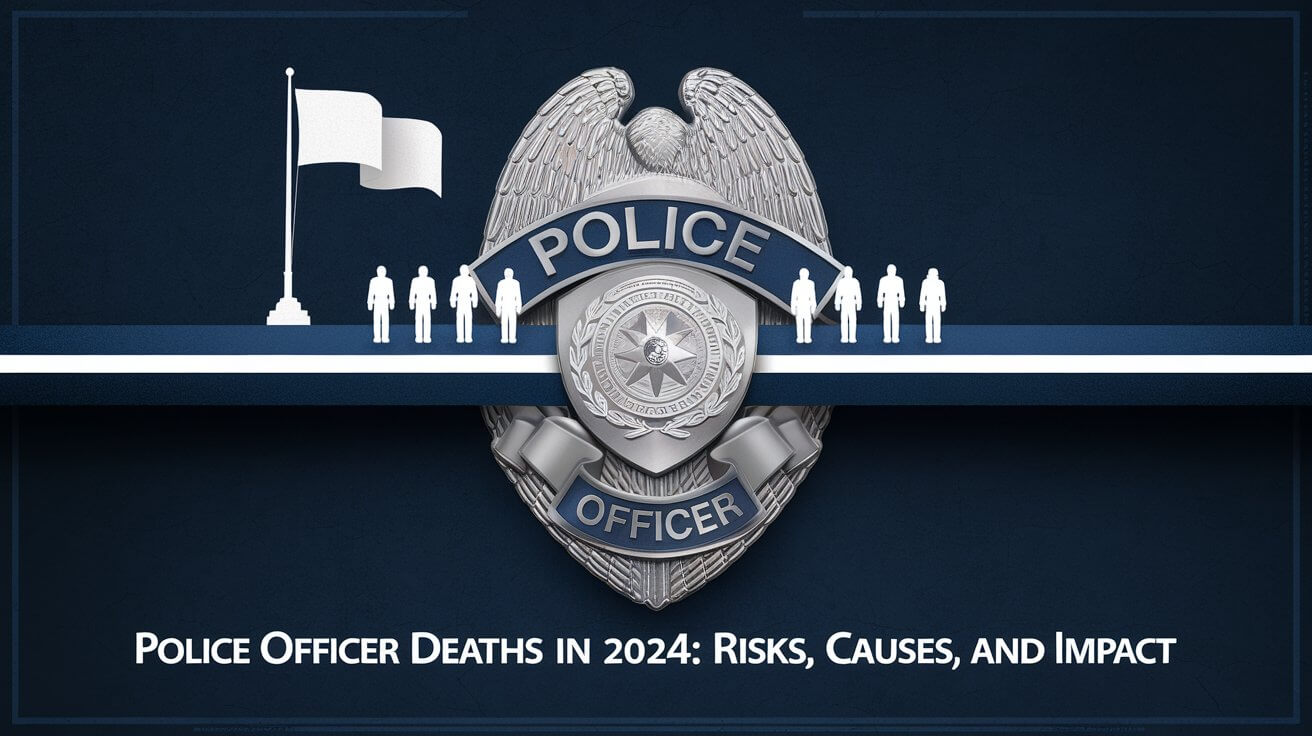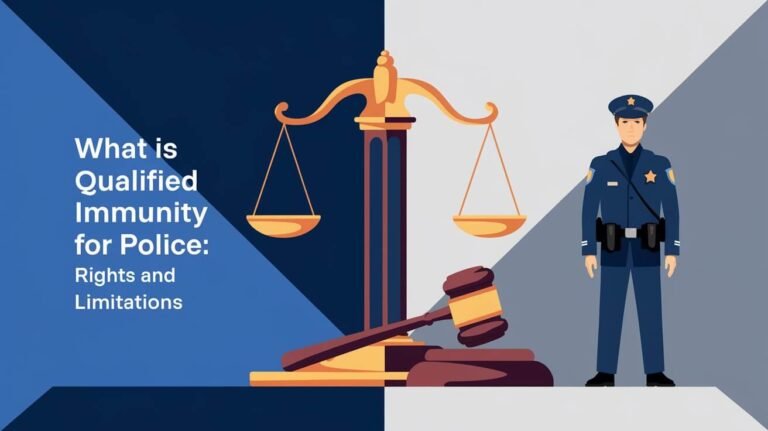Police Officer Deaths in 2024: Risks, Causes, and Impact

Police officer deaths rose in 2024, with 71 officers killed on duty across the U.S. This 15% jump from 2023 underscores the dangers law enforcement faces daily. We’ll examine what’s behind these numbers, how they compare to past years, and what they mean for cops and communities.
Overview of Law Enforcement Deaths in 2024
The year 2024 saw a concerning uptick in police officer fatalities. The National Law Enforcement Officers Memorial Fund (NLEOMF) reported 71 line-of-duty deaths in the first half of the year alone. This marks a significant rise from the 62 officers who died during the same period in 2023.
Total number of officers killed
By the end of 2024, the total number of fallen officers reached a startling figure. Each loss represents not just a statistic, but a life cut short and a family forever changed.
Comparison to previous years
The 15% increase in officer deaths compared to 2023 raises alarm bells within the law enforcement community. This trend reverses the gradual decline seen in recent years, prompting a closer look at the factors behind this spike.
Leading Causes of Police Officer Deaths in 2024
Understanding the primary reasons behind officer fatalities helps identify areas for improvement in safety protocols and training.
Firearms-related fatalities
Guns remained the top killer of police officers in 2024. 28 officers lost their lives to gunfire, an 8% increase from the previous year. These incidents often occurred during routine calls or traffic stops, underscoring the unpredictable nature of police work.
Traffic-related incidents
Road-related deaths saw a sharp rise in 2024. 26 officers died in traffic incidents, more than doubling the number from 2023. This category includes both vehicle crashes and officers struck by passing cars while on duty.
Other causes of line-of-duty deaths
The “other” category, which includes health-related issues and various accidents, accounted for 17 deaths. While lower than the previous year, this number still represents a significant portion of officer fatalities.
Geographic Distribution of Officer Fatalities
Officer deaths weren’t evenly spread across the country. Some regions and states bore a heavier burden than others.
States with highest number of deaths
Georgia stood out with six officers killed in the line of duty by August 2024. Other states like Texas and Florida also saw multiple officer deaths throughout the year.
Urban vs. rural fatality rates
While major cities often grab headlines, rural areas weren’t immune to officer fatalities. The distribution between urban and rural deaths provides insights into the unique challenges faced by law enforcement in different settings.
Demographics of Fallen Officers
Behind each statistic lies a person with a story. Understanding who these fallen officers were paints a fuller picture of the human cost.
Age and years of service
The average age of officers killed in 2024 was 39, with an average of 13 years on the job. This data points to a mix of both seasoned veterans and those earlier in their careers falling victim to line-of-duty deaths.
Gender breakdown
While male officers made up the majority of fatalities, female officers weren’t spared. Of the 71 deaths in the first half of 2024, three were women. This reflects the ongoing gender disparity in law enforcement while highlighting the risks faced by all who wear the badge.
High-Profile Cases and Their Impact
Certain incidents in 2024 captured national attention, putting a spotlight on the dangers of police work.
Notable incidents in 2024
The death of Detective Jonathan Diller of the New York City Police Department sent shockwaves through the law enforcement community. Diller was fatally shot during a traffic stop, leaving behind a young family and a grieving department.
Community and departmental responses
High-profile deaths often spark outpourings of support from communities. They also lead to internal reviews of procedures and renewed calls for officer safety measures.
Factors Contributing to Officer Deaths
Several elements play into the rise in police fatalities, from societal trends to operational challenges.
Increased violence against law enforcement
Some point to a growing anti-police sentiment as a factor in the rise of officer deaths. Whether this perception translates to actual increased violence remains a topic of debate and study.
Training and equipment considerations
The effectiveness of current training protocols and protective gear comes under scrutiny with each officer death. Identifying gaps in these areas could save lives in the future.
Efforts to Reduce Officer Fatalities
Law enforcement agencies and policymakers are actively working to bring down the number of officer deaths.
Policy changes and initiatives
Many departments are reviewing and updating their policies on high-risk activities like vehicle pursuits and serving warrants. These changes aim to balance effective policing with officer safety.
Technological advancements in officer safety
From improved body armor to smart sensors that detect potential threats, technology plays a growing role in protecting officers on the job.
Support for Families of Fallen Officers
The impact of an officer’s death extends far beyond the individual, affecting families and entire communities.
Organizations providing assistance
Groups like Concerns of Police Survivors (C.O.P.S.) offer crucial support to the families left behind. They provide emotional counseling, financial assistance, and a network of others who understand their loss.
Memorial events and recognition
Annual events like National Police Week honor fallen officers and provide a space for collective mourning and remembrance. These gatherings also serve to educate the public about the sacrifices made by law enforcement.
The Broader Impact on Law Enforcement
The rise in officer fatalities ripples through the entire profession, affecting everything from morale to recruitment.
Recruitment and retention challenges
With each officer death, departments face increased difficulty in attracting new recruits and keeping experienced officers on the force. The perceived dangers of the job can deter potential candidates.
Mental health concerns in the police force
The constant stress of potential danger takes a toll on officers’ mental well-being. Departments are increasingly recognizing the need for robust mental health support for their personnel.
Looking Ahead: Projections and Prevention Strategies
While the numbers for 2024 are concerning, they also serve as a call to action for improving officer safety.
Anticipated trends for future years
Experts analyze current data to project future trends in officer fatalities. These forecasts help agencies prepare and allocate resources effectively.
Innovative approaches to officer safety
From virtual reality training simulations to community engagement programs aimed at reducing violent confrontations, new ideas are constantly emerging to keep officers safe on the job.
The loss of 71 police officers in 2024 represents more than just a statistic. It’s a stark reminder of the risks faced by those who choose to serve and protect. By understanding the factors behind these fatalities and working towards effective solutions, we can hope to see a future where fewer families mourn the loss of an officer in the line of duty. The safety of our law enforcement officers remains a critical concern for departments, policymakers, and communities alike.






